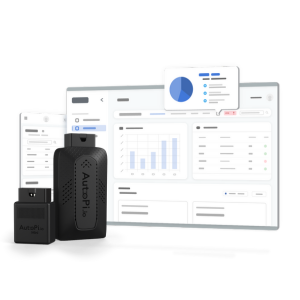Safe Driving: Essential Tips Every Responsible Driver Should Know
Safe driving is fundamental for ensuring your safety and that of others on the road. This blog post provides comprehensive tips for safe driving, covering key safety driving tips.
Vehicle Maintenance and Awareness
Regularly inspecting your vehicle's tires, brakes, lights, and fluid levels is a key part of safe driving practices. Being aware of your vehicle's blind spots, especially when changing lanes or turning, is a crucial driver safety tip.
Defensive Driving Techniques
Driving safely involves staying focused on the road and avoiding distractions such as using phones and eating while driving. It is also important to get enough rest. Adhering to speed limits and adjusting your speed according to road and weather conditions are important safe driving techniques. Maintaining a safe distance from the vehicle ahead is a recommended safety for drivers tip, allowing ample time for reactions and minimizing driving risks.
Planning and Preparedness
Keeping informed about weather forecasts and road conditions is a vital safe driving rule, enabling you to adjust your driving strategy as necessary. Prioritizing sufficient rest before driving and taking regular breaks are important car safety tips that help avoid fatigue.
Safety Features and Practices
Utilizing advanced safety features in your vehicle, like automatic emergency braking and lane departure warnings, enhances safety on the road. Always wearing your seatbelt and ensuring all passengers do the same is a fundamental safe driving practice. Practicing careful parking and reversing, while being mindful of pedestrians and obstacles, are essential tips for driving safely.
What to Do After an Accident
Remain Calm and Assess Safety
After an accident, the first step is to remain calm and assess the safety of yourself and others. When you are driving, you should always be prepared for unexpected situations. If anyone is injured, calling emergency services is a key safe driving practice.
Move to a Safe Location if Possible
If the accident is minor and it is safe to drive your car to a non-obstructive location, do so. This is part of practicing safe driving and ensuring safety on the road for all.
Contact Authorities
Regardless of the accident's severity, it's a crucial driver safety tip to contact the police. This is in line with safe driving rules and helps in documenting the incident accurately.
Exchange Necessary Information
Exchange contact and insurance details with the other party involved. This is a basic step in driving safety and driver safety topics, focusing on post-accident procedures.
Document the Incident
Taking photos and notes about the accident scene is an important road safety tip. It includes capturing details of the vehicles, damage, and road conditions, which are valuable for driving articles and insurance claims.
Notify Your Insurance Company
One of the safe driving habits following an accident is to promptly inform your insurance company, providing them with detailed information and evidence from the scene.
Reflect on Safe Driving Habits
Post-accident is a good time to reflect on safe driving habits and driving safety tips to minimize future risks. This reflection is a safety message for drivers and part of continuous driving safety education.
Integrating Technology for Enhanced Safety
In the realm of safe driving practices, technology plays a pivotal role. An example is the use of the AutoPi TMU device in promoting safer driving behaviors. This device offers a real-world application of how technology can aid in driving safety.
The AutoPi TMU device supports companies aiming to improve the safety of its fleet. The device, installed in the vehicles, provides critical data that helps in monitoring driver behavior and vehicle performance. For instance, it alerts fleet managers when drivers exhibited signs of fatigue or when they are not adhering to speed limits. This immediate feedback allows the company to address safety concerns proactively.
Moreover, the AutoPi TMU’s advanced features such as automatic emergency braking alerts and lane departure warnings significantly contributed to reducing incidents on the road. The device's ability to analyze driving patterns also helped in identifying areas for driver training, focusing on safe driving habits.
Integrating the AutoPi device into a fleet management strategy not only enhances vehicle and driver safety but also promotes a culture of safety within the organization. By leveraging such technology, companies can take a significant step towards minimizing risks and fostering responsible driving practices and ensuring drivers are following the rules regarding driver hours.
Prioritizing Safety
Safety on the road is a shared responsibility. By following these driving safety tips and driver safety topics, you contribute to creating a safer driving environment for everyone. When you are driving, you should always make safety your top priority.





